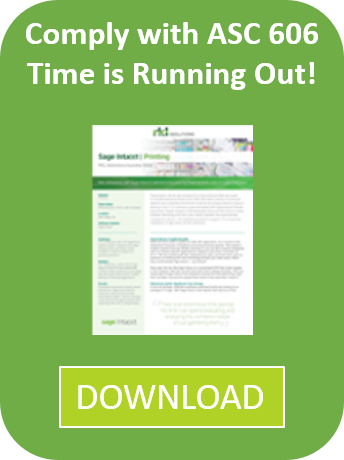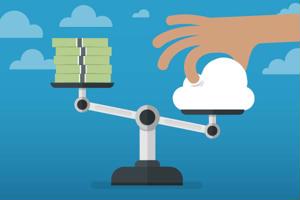It basically describes a point of no return, past which a big shift becomes irreversible. Examples might include the sudden, rapid drop in New York City's crime rates in the 1990s or the huge spike in iPhone sales after 2009.
SaaS and the revenue recognition tipping point
 In terms of its adoption by SMBs and enterprises, software-as-a-service may be approaching its own tipping point at the end of the 2010s. Cloud-based software was a $48.8 billion market in 2014, but could reach almost $113 billion by 2019. In that year, $1 out of every $4.59 spent on software could go toward SaaS solutions, according to IDC.
In terms of its adoption by SMBs and enterprises, software-as-a-service may be approaching its own tipping point at the end of the 2010s. Cloud-based software was a $48.8 billion market in 2014, but could reach almost $113 billion by 2019. In that year, $1 out of every $4.59 spent on software could go toward SaaS solutions, according to IDC.
While their opportunities are rapidly expanding and their products – from Salesforce for CRM to Intacct for project accounting – are becoming industry standards, SaaS vendors themselves face a different kind of tipping point. The hundreds of changes made up until 2014 to converge GAAP and IFRS have resulted in a new, challenging reality for revenue recognition for SaaS companies that will soon come into effect:
- Subscription billing is the backbone of any SaaS operation. Indeed, an essential part of the SaaS value prop is the ability of customers to pay for software on an ongoing basis as part of a service contract, instead of via a huge upfront investment. But the updated revenue recognition rules from the FASB changes how revenue is recognized from such contracts, with more emphasis on single contracts and no recognition anymore on cash receipts. It outlines a fresh process that as of May 2016 was still being modified with details about which contracts fall under existing and new regulations.
- The transition from the old to the new standards is particularly problematic. With the changes slated to kick in on Dec. 15, 2017, for public corporations and a year later for private ones, current contracts that end on or after those dates have to be accounted for under both sets of rules. SaaS providers need a way to support the different standards and perform comparative reporting during the transition year. This complex requirement is beyond the capabilities of many legacy ERP systems and Excel-based processes.
- Many financial statement preparers do not feel ready for the shift. The updated regulations combined with the basic challenges in subscription lifecycle management have pushed many of their teams and existing tools (spreadsheets, desktop accounting software, etc.) to the limit. Subscriptions present the issue of high volume and complexity through pricing models and updates to tiers, while vendors that offer a mix of software, hardware and/or professional services face the challenge of de-coupling billing from revenue recognition.
"Subscription billing is the backbone of SaaS."
It is a classic tipping-point scenario. Lots of things that seem small in isolation – e.g., a tweak to a regulatory rule, a switch to a tiered service – come together and culminate in a major transformation. In the case of SaaS companies, they need to handle their increasingly complex revenue recognition requirements by updating their tools and practices.
How cloud accounting software helps SaaS providers move forward
There may be plenty of obstacles in the way of today's subscription-reliant SaaS companies, but with the right platform they can overcome them. A cloud-based solution such as Intacct enables you to go much further than Excel, QuickBooks and others and make a sustainable transition. It provides:
1. Automatic revenue recognition accounting
Like we said earlier, it can be easy to get revenue recognition and billing tangled up, especially if you sell a mix of products. With cloud accounting, you can automatically capture new details in subscription contracts and account for them under the proper rules without getting them mixed up with pricing or billing terms.
 Cloud accounting software makes a big difference in handling the revrec transition.
Cloud accounting software makes a big difference in handling the revrec transition.2. Sophisticated features for revenue recognition
Since the old and new revenue recognition standards are both in play until 2018, it is important to have a system that can handle them side by side. Implementing Intacct with the help of RKL gives you a solid technical foundation for the transition through advanced features such as multi-book accounting, extensive paid/billed/unbilled fields and usage-based revenue recognition.
3. Useful forecast insights
SaaS vendors need clear numbers that they can show to their boards of directors and also use to map out the futures of their businesses. A modern cloud accounting solution can provide side-by-side forecasting across revenue, billing and expense for both old and new books.
The overall ease of use of cloud software makes these features even more valuable for SaaS vendors. As they approach the tipping point of revenue recognition standards, having a platform such as Intacct and an implementation partner like RKL at their side will be crucial for adapting to the major changes.




